MARIANI’SVirtual
Gourmet
January
20, 2013
NEWSLETTER

Artichokes, Istanbul
(2010) by Galina Dargery
❖❖❖
THIS WEEK
SAVORING
SCOTTSDALE, ARIZONA
by John Mariani
NEW YORK CORNER
Pizzarte
by John Mariani
❖❖❖
SAVORING
SCOTTSDALE, ARIZONA
by
John Mariani

4949 East Lincoln Drive
888-627-3010
montelucia.com
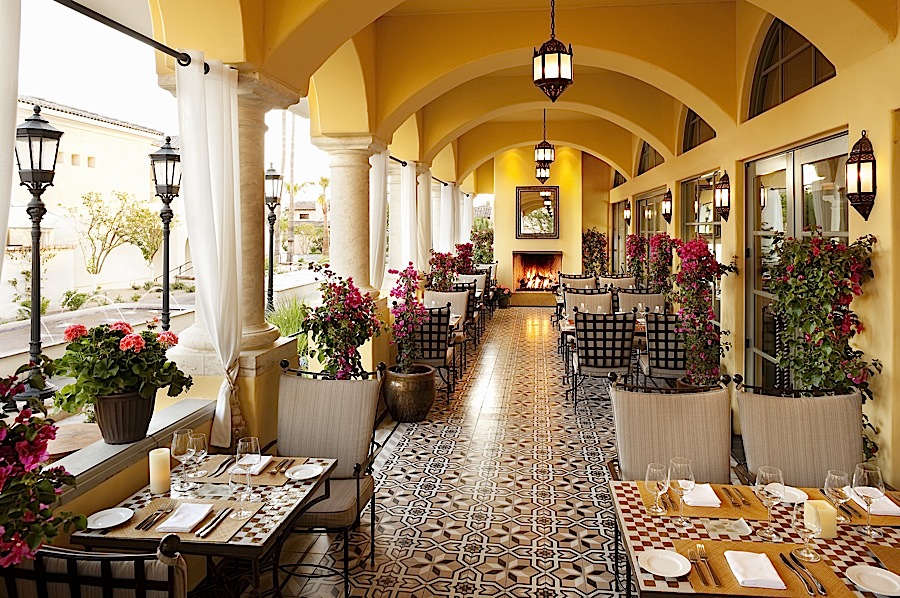 The
photo above, with a view of Camelback Mountain,
looks very much like a stage set and in
Technicolor tones. But that's the way
sunsets really are in Scottsdale, brilliant
enough to make the coyotes howl. Sitting
in Prado, the Montelucia's restaurant, is as
good a place as any to watch these displays, and
you'll dine well, too. Three years ago this was
one of the most exciting Spanish restaurants in
the USA, headed by, oddly enough, an Italian
chef. Now, Executive
Chef Michael Cairns has broadened the menu to appeal
to a wider range of guests, and the results, while
admirable haven't quite the cogency of a restaurant
that is, after all, named after a museum in Madrid.
The
photo above, with a view of Camelback Mountain,
looks very much like a stage set and in
Technicolor tones. But that's the way
sunsets really are in Scottsdale, brilliant
enough to make the coyotes howl. Sitting
in Prado, the Montelucia's restaurant, is as
good a place as any to watch these displays, and
you'll dine well, too. Three years ago this was
one of the most exciting Spanish restaurants in
the USA, headed by, oddly enough, an Italian
chef. Now, Executive
Chef Michael Cairns has broadened the menu to appeal
to a wider range of guests, and the results, while
admirable haven't quite the cogency of a restaurant
that is, after all, named after a museum in Madrid.The hotel/resort itself is a fine place, spread out around that pool above, but those iron gates do
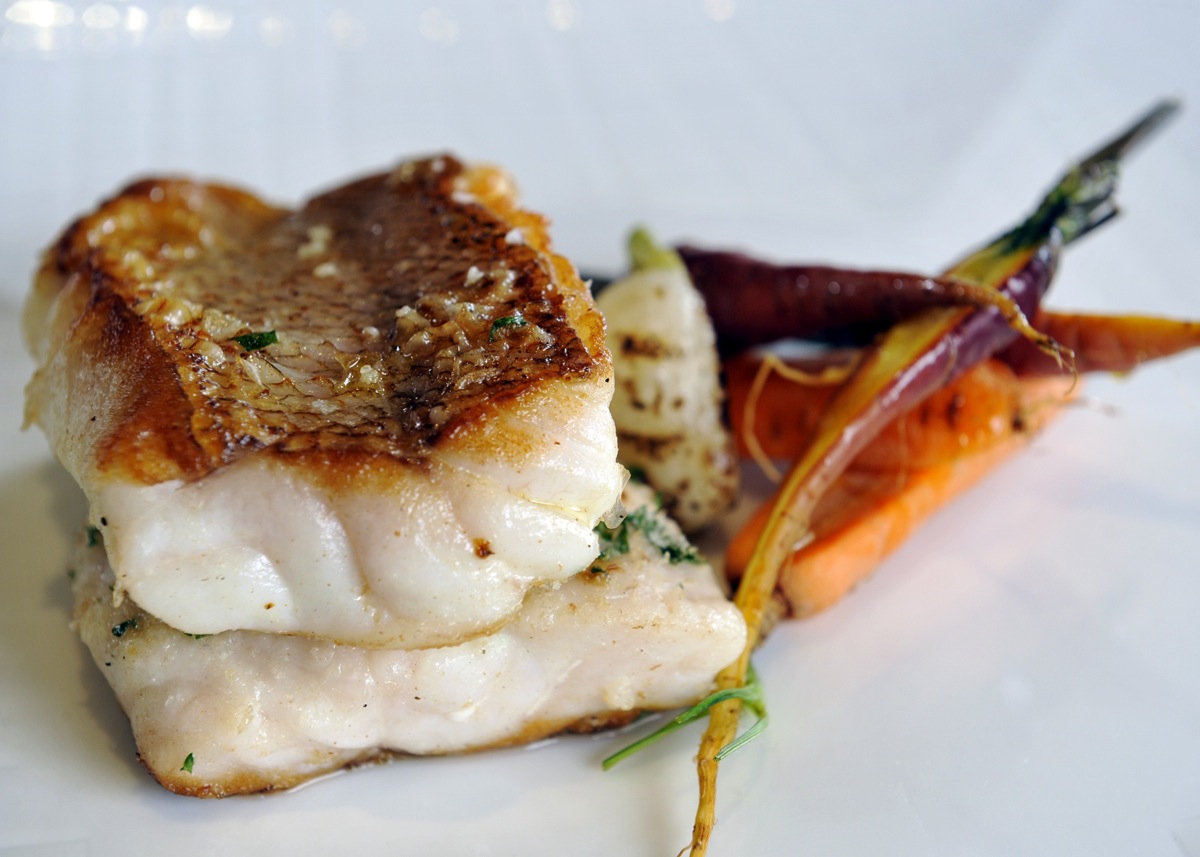 not make it
easy to get to and from your room in flanking
buildings; I got trapped one night and had to holler
to get sprung. The rooms themselves are
beautifully suited to the terrain, in a southwestern
style that is both commodious and very comfortable.
not make it
easy to get to and from your room in flanking
buildings; I got trapped one night and had to holler
to get sprung. The rooms themselves are
beautifully suited to the terrain, in a southwestern
style that is both commodious and very comfortable.
Prado is a good-looking place, inspired more by Italian villa architecture than Spanish or Southwestern, but those styles fit together amicably in the large space with its open kitchen and large lounge area. The room is designed so that, while the tables along the patio may be favored, there isn't a bad sight-line in the place, just some tables cozier than others.
There are now plenty of Italian dishes on the menu, beginning with an extremely rich and buttery polenta with mushrooms, corn kernels, and herbs; I thoroughly enjoyed, in season, the soft shell crab lightly fried crisp. I tried two pastas, one of tagliatelle with hearty pork sausage, bitter greens, vegetables, charred tomatoes, chili, and sharp pecorino, a dish a little labored but tasty; potato gnocchi were sautéed crispy and served with sweet English peas, prosciutto, basil, mint, and pecorino, both pastas available as a main course.
Wild striped bass came steamed in a bag, which allows for welcome juiciness; it was served with mushrooms, artichokes, tomatoes, ginger, white wine and scallions, while well-roasted, very flavorful chicken came with roasted squash, cous cous, and marinated eggplant, carrying over the Mediterranean flavors. Of the two desserts I sampled, I highly recommend a fine rendition of good old strawberry shortcake.
Sitting inside that night, with the intense heat of the day somewhat abated, I looked out on that pool scene above, with its uplifted palm trees, and lighted walkways, and above it all and beyond the mountains a silver scythe of a crescent moon had nestled in for the night.
Prado is open for breakfast, lunch, and dinner daily. At dinner starters run $11-$15, pastas (full portions) $20-$24, and main courses $27-$39.
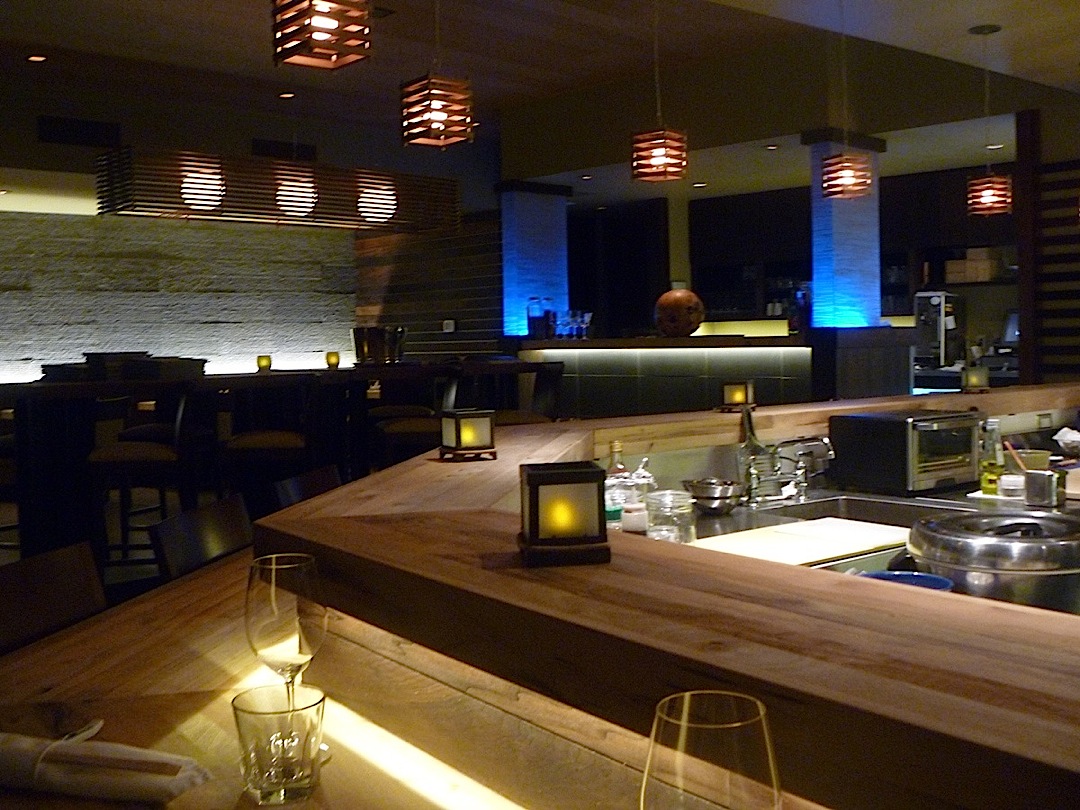 ShinBay
ShinBay7001 N. Scottsdale RD
480-664-0180
shinbay.com
Chef
Shinji Kurita is nothing if not dedicated.
On the night I visited the shadowy restaurant, I
was one of only three occupied tables. And, asking
my Scottsdale friend if it was an off night,
learned that it was not unusual for a midweek
night. It seems that Kurita is one of those chefs
who works strictly by the numbers--not of
customers but of pieces of the finest seafood he
can buy that morning. So, if he only has, say, six
perfect pieces of toro, then that's all he'll
serve. And he won't fill up the restaurant
with people who don't appreciate his dedication.
In other cities like NYC and
Chicago, foodies would fall over themselves to eat
the long omekase
meals here, ranging from $100 and up for five
courses, with more numerous 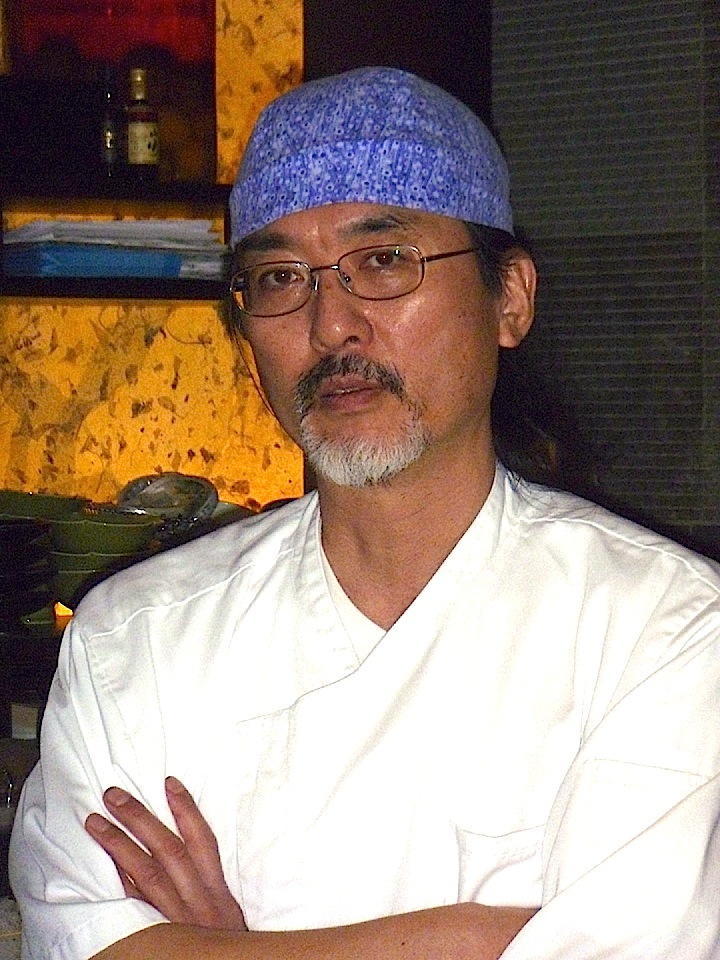 options
available. Still, given that places like the
much-hyped Blanca and Atera in NYC have less than
20 seats, those places always look packed. If
Kurita serves 20 people a night, he is very happy.
options
available. Still, given that places like the
much-hyped Blanca and Atera in NYC have less than
20 seats, those places always look packed. If
Kurita serves 20 people a night, he is very happy.
Those who choose to let Kurita
choose their meal will be rewarded with Japanese
cuisine not readily found elsewhere in the U.S.
and in Scottsdale, only at the well-regarded Nobuo
at Teeter House. My meal was composed
of five courses, which came out at a civilized
pace, beginning with halibut in two forms, topped
with grape seed oil, scallions, garlic, and
ginger, and another with spicy daikon, scallions
and hot yuzu
kosho paste. Oddly enough, halibut
was part of the next course (it was pretty
terrific halibut), this time with Chinese pesto.
Hotaru firefly squid was flavored with yuzu miso,
and sockeye salmon came cuddled in cucumber 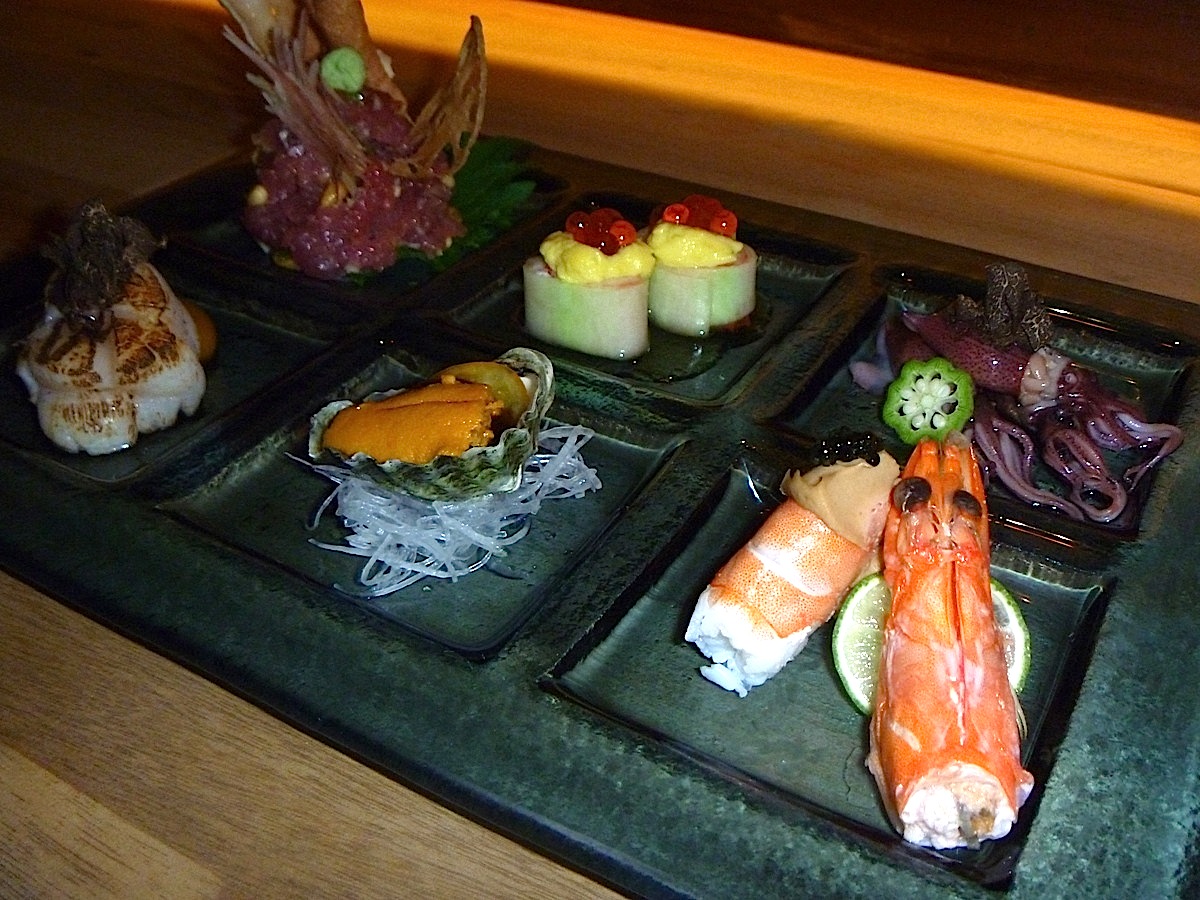 slices,
with avocado, ponzu sauce, scallions and salmon
roe. Cucumber also wrapped around King crab with a
sweet vinegar dressing, Japanese mayonnaise, and
salmon roe.
slices,
with avocado, ponzu sauce, scallions and salmon
roe. Cucumber also wrapped around King crab with a
sweet vinegar dressing, Japanese mayonnaise, and
salmon roe.
Still part of the second course
were two uni
items with wasabi; tuna tartar with rice cracker
and crispy lotus root; more squid with truffle oil
and salt; an orange clam with sweet mustard
marinade and yuzu
miso scallions seared hotate
(scallops) with truffle oil and salt; and blue
shrimp with shrimp reduction, osietra caviar and
fried shrimp head.
Portions were just a bite or
two, but we'd had a lot of food by then, with much
more to come. The third course brought
Madagascar shrimp, soy sauce and sake marinate and
a fried egg white, black bean oyster sauce and
scallion stir fry, indicating the preparations
were becoming more elaborate. The fourth course
was washu beef
with enoki mushrooms and asparagus, sprinkle with
Himalayan rock salt, and for the end course, ten
pieces of nigiri sushi, from silver shrimp to toro tuna.
There were many overlappings of
foods and seasonings, but flavors remained
distinct and unmuddled, a tribute to Kurita's
imagination, which, I suspect is endless. To
go here once is not enough; to go here again and
again might not be either.
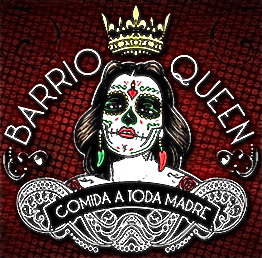
7114 E. Stetson Drive
480-656-4197
barrioqueen.com
Silvana Salcido Esparza (right) is finally happy.After running several popular Mexican cafés
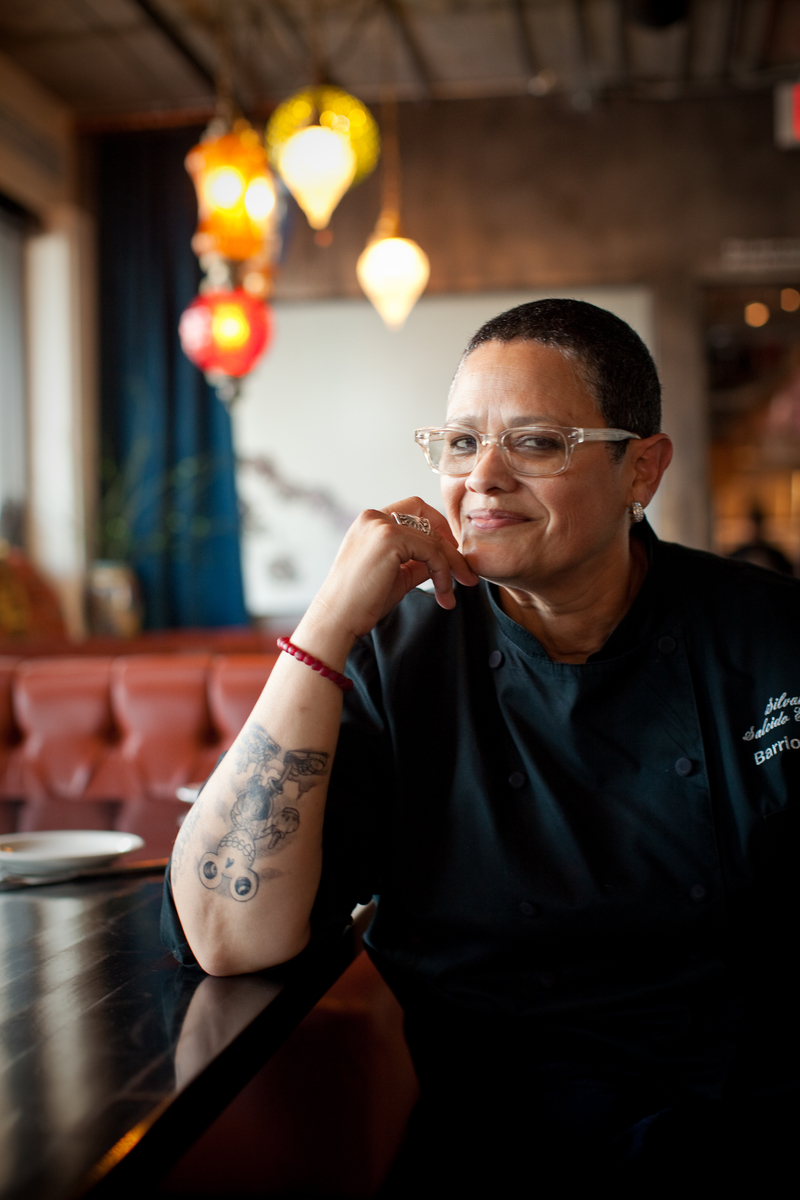 in
Scottsdale, making endless trips south of the border
for ingredients, and trying to wean gringos off
enchilada platters, she's doing what she was
apparently born for — translating her formidable pasión
and knowledge into a reality.
in
Scottsdale, making endless trips south of the border
for ingredients, and trying to wean gringos off
enchilada platters, she's doing what she was
apparently born for — translating her formidable pasión
and knowledge into a reality."Whenever I go to Mexico, I make it a point to do two things: visit the main church and find the town's mercado," she says. "I would extend my stays in remote towns so I could wait for the mercado ambulante —the traveling market, where I find the heartbeat of Mexico. I can only hope to honor that tradition at Barrio Queen." Every inch of it is an expression of Esparza's cultural roots, including the Día de los Muertos skeletons. I could see Quentin Tarantino blocking out his next movie here without touching a thing. Everything people love about true Mexican food is intensified by Esparza, from the cochinita pibil tacos brimming with juicy spiced pork to the barrio chicken with piñon cream. You won't find better chiles en nogada outside of Mexico City, here done with apricots, pecans, and pomegranate seeds in a velvety almond cream. Esparza's food is exactly what it says in street lingo on Barrio Queen's T-shirts — A TODA MADRE — "totally awesome!"
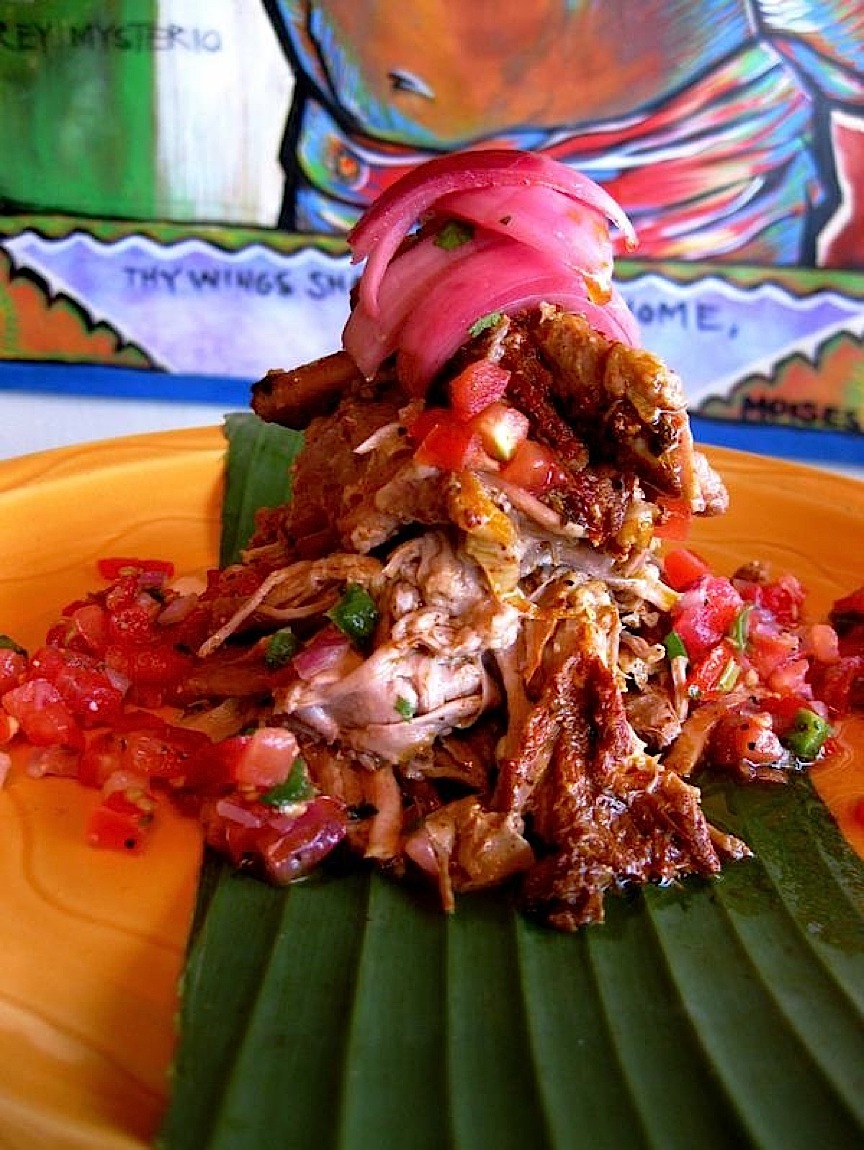 The menu's larger than it
needs to be, not only stressing the kitchen but,
given the quality of everything here, difficult to
choose among, from the grilled corn on the cob
served with cotija
cheese, cilantro and lime to the marinated pork
cooked with orange rind and Coca-Cola, served with
green chile and Oaxacan cheese. Those are just two
of many appetizers. Then there are soups,
salads, a whole bunch of savory tacos and
quesadillas, enchiladas, tostones, burritos and much
more. Everything I tasted was scintillating,
packed with juiciness and levels of flavor, some
cheese here, some avocado there, huitlacoche,
garlic, shrimp, more and more and more.
The menu's larger than it
needs to be, not only stressing the kitchen but,
given the quality of everything here, difficult to
choose among, from the grilled corn on the cob
served with cotija
cheese, cilantro and lime to the marinated pork
cooked with orange rind and Coca-Cola, served with
green chile and Oaxacan cheese. Those are just two
of many appetizers. Then there are soups,
salads, a whole bunch of savory tacos and
quesadillas, enchiladas, tostones, burritos and much
more. Everything I tasted was scintillating,
packed with juiciness and levels of flavor, some
cheese here, some avocado there, huitlacoche,
garlic, shrimp, more and more and more. Barrio Queen has a set a standard that the formidable Silvana has sharpened through years of research and love of the kitchen. It is a summation of Mexican diversity and regionalism but also very much a personal expression of her own soul.
Open for lunch and dinner daily; check menu for prices, which are amazingly modest.
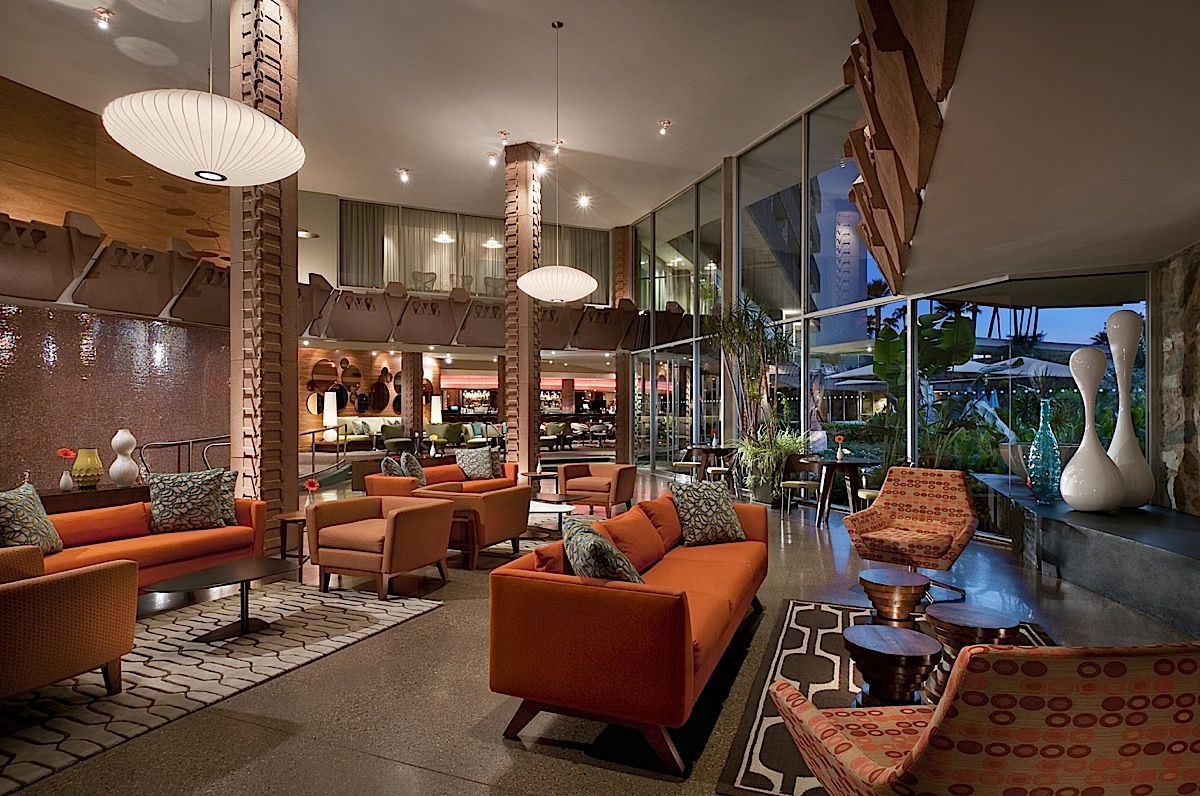 Hotel
Valley Ho
Hotel
Valley Ho 6850 E. Main Street
480-248-2000
hotelvalleyho.com
At a time when Scottsdale was mostly farms, the construction of a modern hotel did not portend great success, but the Hotel Valley Ho, opened in 1956, suggested that this small town was about to get bigger and more attractive to tourists looking for sun and quiet. The hotel was a sister property to the Westward Ho in Downtown Phoenix, both owned by John B. Mills and husband and wife Robert and Evelyn Foehl. The couple lived on-site to make sure a guest "felt wanted."
The place was designed by Edward L. Varney, whose work included Arizona State
 University’s Sun Devil
Stadium, the Motorola Building, and others in a
post-war, 1950s style that came to be known as
Populism, a specific look, with bright colors, no
reference at all to past architecture, an emphasis
on the swimming pool, and space age furniture that
was quickly becoming a dominant look of the the
west. It was the first in Scottsdale to
have central air conditioning, making it a
year-round hotel. Its 99 rooms cost
$7.50 a night, with TV, some with
kitchenettes, and it attracted a celebrity Hollywood
crowd that came for the privacy, including Bing
Crosby, Tony Curtis and wife Janet Leigh, and Robert
Wagner and Natalie Wood, who had their 1957 wedding
reception in the hotel ballroom.
University’s Sun Devil
Stadium, the Motorola Building, and others in a
post-war, 1950s style that came to be known as
Populism, a specific look, with bright colors, no
reference at all to past architecture, an emphasis
on the swimming pool, and space age furniture that
was quickly becoming a dominant look of the the
west. It was the first in Scottsdale to
have central air conditioning, making it a
year-round hotel. Its 99 rooms cost
$7.50 a night, with TV, some with
kitchenettes, and it attracted a celebrity Hollywood
crowd that came for the privacy, including Bing
Crosby, Tony Curtis and wife Janet Leigh, and Robert
Wagner and Natalie Wood, who had their 1957 wedding
reception in the hotel ballroom.As the years passed, the novelty of the hotel passed, too, in favor of more modern styles of architecture. In 1973, Robert Foehl passed away, and the hotel was acquired by Ramada, sold in in 2002 to a highest bidder who wanted to raze the old dinosaur, but, happily, the deal fell through. MSR Properties, a local company run by the Lyon family, bought the property and were committed to restoring the now historic hotel's original look and atmosphere, re-opening in late 2005.
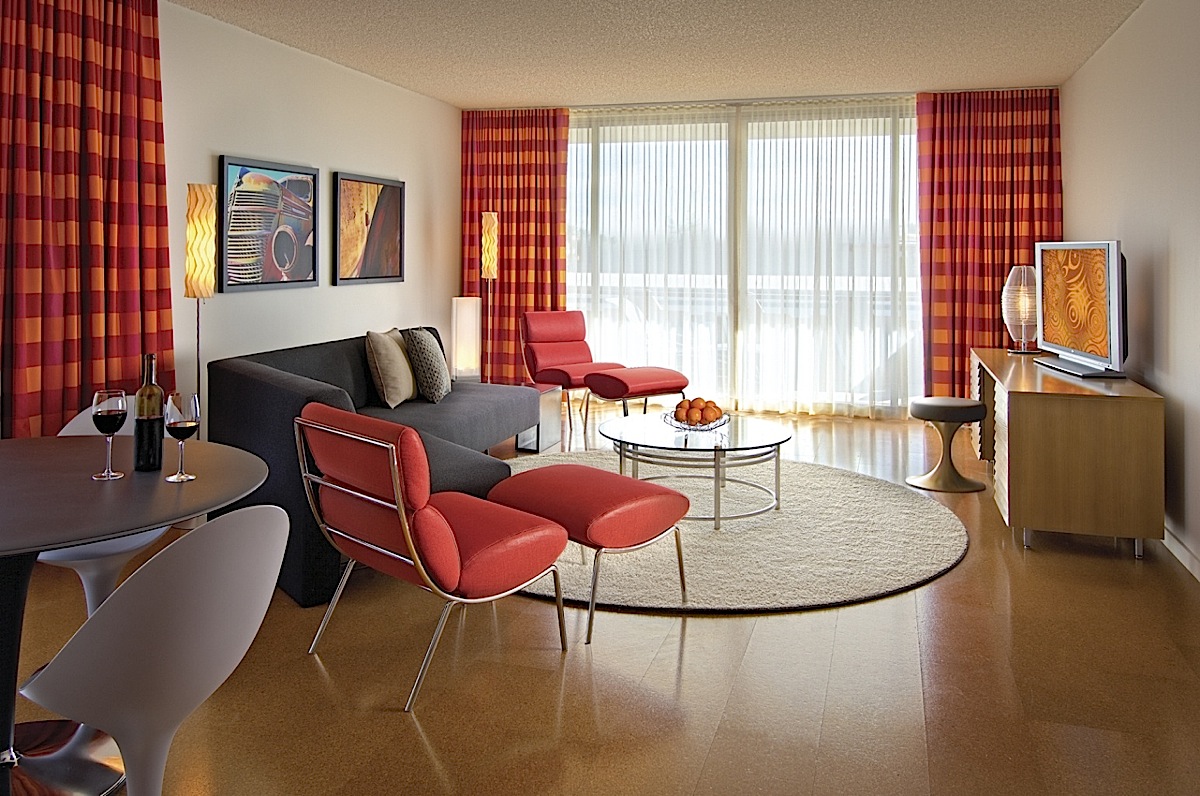 The results
are splendid, beyond what could have been hoped for
at a time when modern amenities are so requisite in
a contemporary hotel.
The results
are splendid, beyond what could have been hoped for
at a time when modern amenities are so requisite in
a contemporary hotel.But drive to the entrance and you expect to see Pontiacs with huge fins, horse-coillared Edsels, and red T-Birds parked there. Check into the lobby and you'll feel like Bobby Darrin and Sandra Dee might come through any minute. Lounge by the pool and you'll feel you're on the set of a Warner Bros. movie like "Palm Springs Weekend" and expect Esther Williams to come swimming up to the edge. Up in the rooms, all done in Populuxe colors--lime, mango, violet, avocado--you'll feel quite ring-a-ding-ding and want to order up a bottle of Scotch and plenty of ice.
This is not a fantasy: this is the real deal, a marvelous refitting of an era that had style to burn. This is not a nostalgic reverie; the Hotel Valley Ho--funny name and all--is a living museum of Southwest American culture from the Atomic Age.
It was the kind of look once widely adapted in a cheaper, cheesy rip-off by motel chains around the U.S., but none ever did it with this high level of panache.
I wish I'd had the chance to dine at the restaurant at the Valley Ho, especially since one of the West's best, Chuck Wiley, is executive chef. But I will be back and give it a try. As a matter of fact, I can't wait to get back to this unique hotel and away from all its corporate-style competitors.
... AND ONE CITY OVER. . .
NORTH Fattoria Italiana
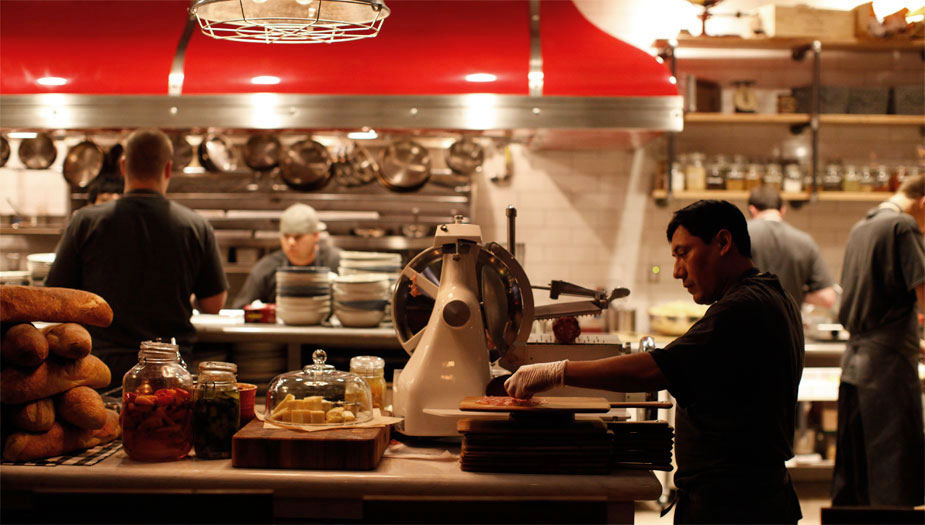
4925 North 40th Street
Phoenix, AZ
602-324-5600
I had what I thought would be a light lunch in Phoenix at this bright, spacious Italian eatery, but everything I tasted was so good that I stuck around and tried more and more, from good breads and arancini rice balls to charcuterie, first-rate puffy pizzas and pastas, including one with spicy rock shrimp, chilies, tomato, garlic, fennel and garlic, all overseen by Chef Chris Curtiss. The room is wide open, and, even during the day, there was live entertainment by a guitarist. Families were gathered around and it's a great place for kids or after any event in town. The kitchen is open, too, the entire staff friendly, and there's a branch in Tucson.
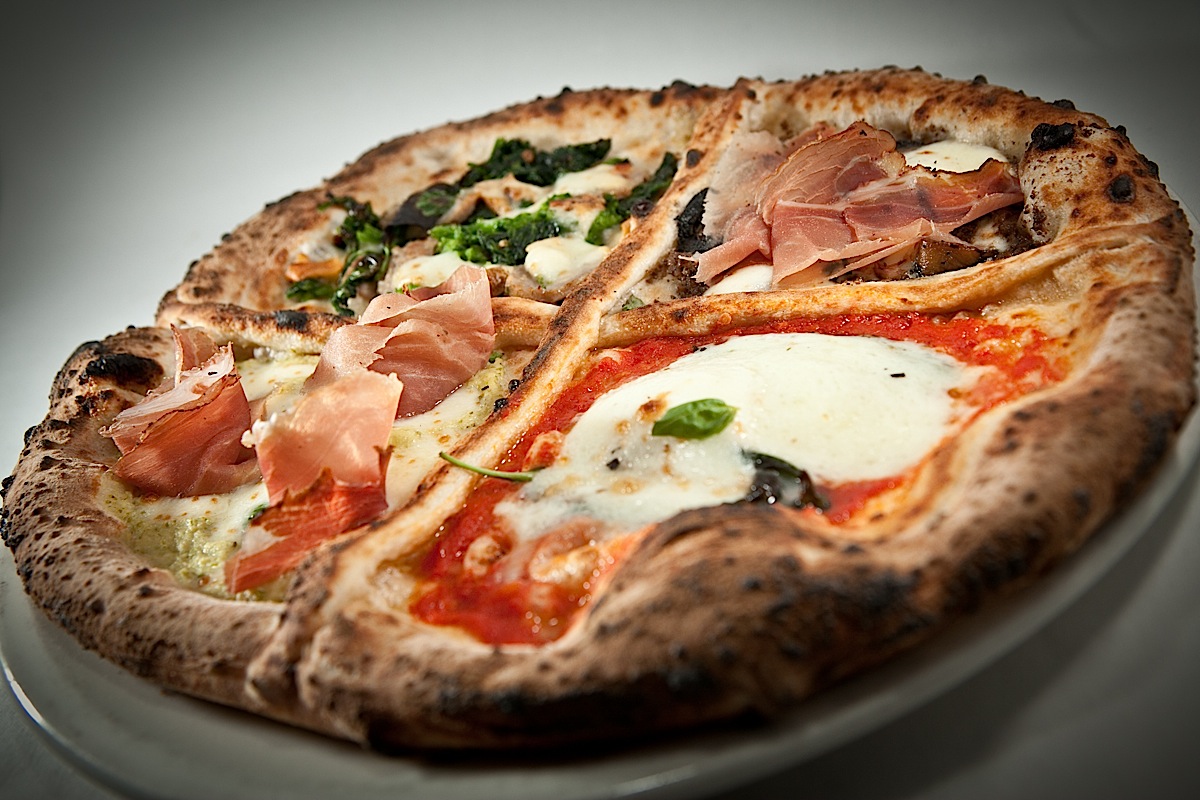 pizzArte
pizzArte69 West 55 Street (near Sixth Avenue)
212-247-3936
pizzarteny.com
PizzArte is a good
name for a place that features excellent pizza
and modern art, but it doesn't do justice to
Neapolitan Executive Chef Antonio Pisaniello's
complete menu of Campanian dishes.
It is
all to the credit of co-owners Bruno Cilio and
Dario Cipollaro de L'Ero that they have given
midtown not just an exceptional pizzeria but a
restaurant that is obviously committed to go
beyond the clichés of Italian food in NYC
and to do so with a regional swagger. For while
you can get some good Neapolitan food around town,
most of it is more in the Italian-American style
and none shows the range of the menu at PizzArte.

Pisaniello has a Michelin star
for his
ristorante outside of Naples in Nusco
called La Locanda di Bu, and he brings that level
of quality to NYC, beginning with breads and focaccia to
nibble on, dip in olive oil, and enjoy with a
variety of olives. You might begin with crisp,
light fried calamari and shrimp with lemon sauce,
or delicious eggplant parmigiana. Meatballs are
studded with pignoli and raisins, very typical of
the region. The artichoke salad was very
refreshing, just drizzled with olive oil and
lemon, and very tender.
PizzArte's namesake dish comes
in 18 versions, every one true to Neapolitan
tradition, not newfangled with ingredients no
Italian would ever let near a pizza. We tried
several and liked them all, especially the quattro formaggi
with Gorgonzola, caciocavallo, smoked buffalo
mozzarella, and parmigiano. Tartufata is
topped with mushrooms, black truffles, mozzarella,
Speck and
basil. Curiously enough, the verace, most
like a Margherita, classic margherita, while
tasty, had mozzarella that had only barely begun
to melt.
Looking around the room, we saw
every single table eating pizza--couples,
families, everyone--and not availing themselves of the
other parts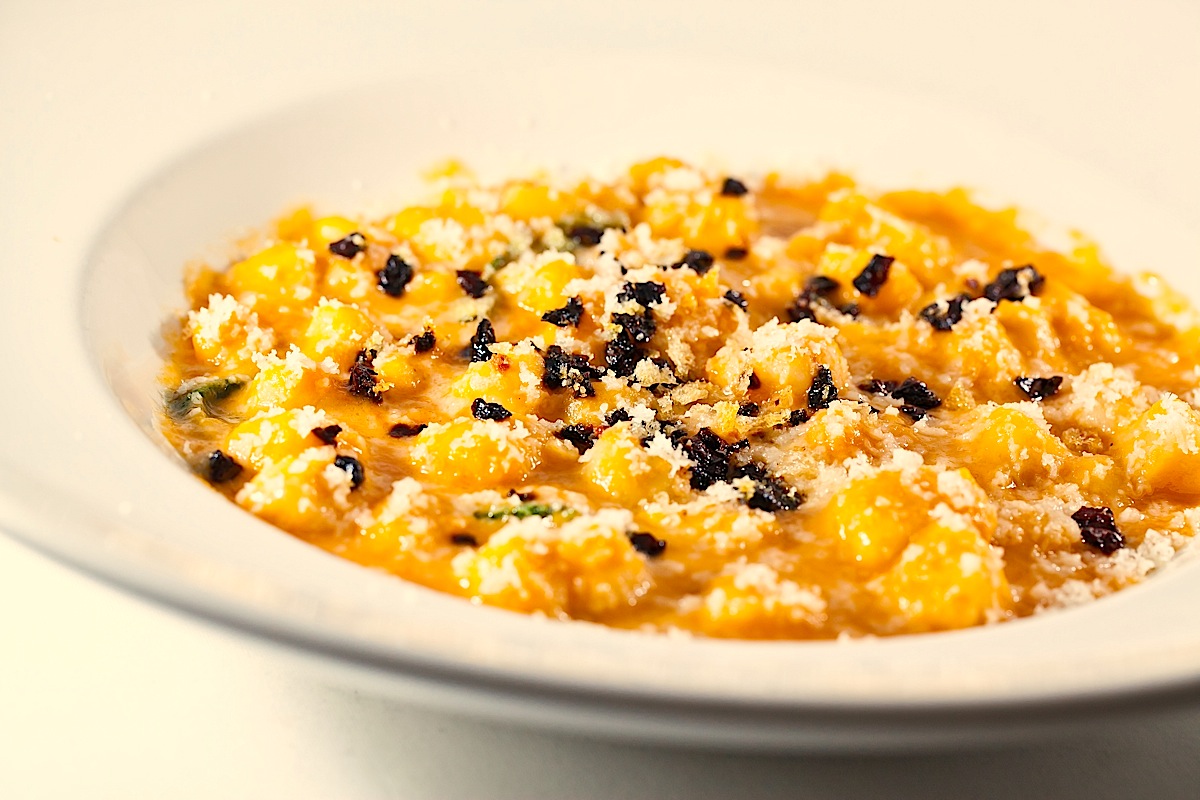 of the
menu, which may well frustrate the owners. The
pastas are superb here, from freshly made maccaronari
with tomato to golden potato gnocchi (left) comes
rich with butternut squash, sage, and Parmigiano.
They even do a distinctive flat paccheri noodles
with baccalà
cod, cherry tomatoes sauce, Gaeta olives and
capers.
of the
menu, which may well frustrate the owners. The
pastas are superb here, from freshly made maccaronari
with tomato to golden potato gnocchi (left) comes
rich with butternut squash, sage, and Parmigiano.
They even do a distinctive flat paccheri noodles
with baccalà
cod, cherry tomatoes sauce, Gaeta olives and
capers.
We forged ahead with
perfectly steamed then quickly seared octopus and
a veal alla
pizzaiola every bit as good as all else
we tried that evening. Then on to two good
desserts, an Italian cheesecake and a baba au
rhum.
The wine
list, primarily Italian, is very reasonably
priced, with several Campanian offerings and
dessert wines like Negroamaro
Passito,
Rarum, ’08 and a selection of grappas and amari.
PizzArte is a two-level affair,
the downstairs narrow and made for pizza-eating,
upstairs a long room with a window over West 55th
Street, its walls lined with a changing art
exhibition with paintings for sale.
It would be a shame if the
people who go to PizzArte for its superb pizzas
never venture upstairs for a true Neapolitan
meal. They are missing some of best
interpretations of such Southern Italian cuisine
in NYC, or anywhere else outside of the Bay of
Naples, even Nusco.
❖❖❖

LOOK! UP IN THE SKY! IT'S A BIRD,
IT'S A PLANE! IT'S . . . A CHICKEN!
According to CCTV, certain KFC suppliers in
Shandong have
been feeding their chickens illegal drugs--"at
least 18 kinds of
antibiotics so that they would not become ill."
KFC says it will
rectify the situation.
RUN THAT BY US AGAIN?
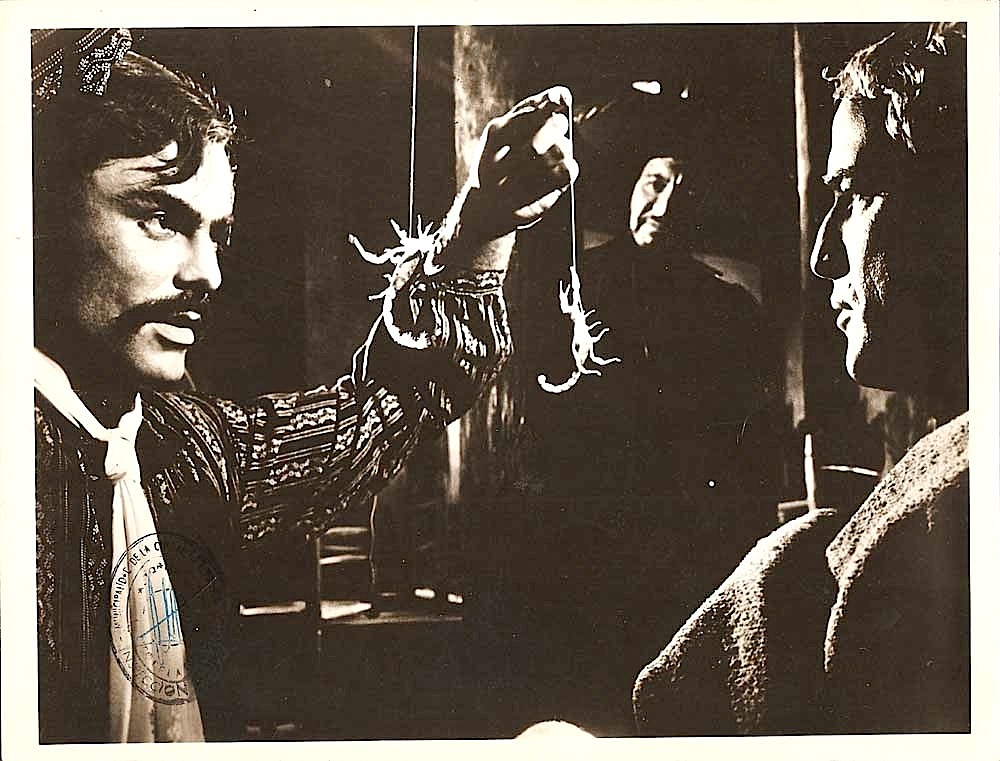
❖❖❖
Any of John Mariani's
books below may be ordered from amazon.com.
 |
My latest book, which just won the prize for best book from International Gourmand, written with Jim Heimann and Steven Heller, Menu Design in America, 1850-1985 (Taschen Books), has just appeared, with nearly 1,000 beautiful, historic, hilarious, sometimes shocking menus dating back to before the Civil War and going through the Gilded Age, the Jazz Age, the Depression, the nightclub era of the 1930s and 1940s, the Space Age era, and the age when menus were a form of advertising in innovative explosions of color and modern design. The book is a chronicle of changing tastes and mores and says as much about America as about its food and drink.
“Luxuriating vicariously in the pleasures of this book. . . you can’t help but become hungry. . .for the food of course, but also for something more: the bygone days of our country’s splendidly rich and complex past. Epicureans of both good food and artful design will do well to make it their coffee table’s main course.”—Chip Kidd, Wall Street Journal.
“[The menus] reflect the amazing craftsmanship that many restaurants applied to their bills of fare, and suggest that today’s restaurateurs could learn a lot from their predecessors.”—Rebecca Marx, The Village Voice. |
"Eating Italian will never be the same after reading John Mariani's entertaining and savory gastronomical history of the cuisine of Italy and how it won over appetites worldwide. . . . This book is such a tasteful narrative that it will literally make you hungry for Italian food and arouse your appetite for gastronomical history."--Don Oldenburg, USA Today. "Italian
restaurants--some good, some glitzy--far
outnumber their French rivals. Many of
these establishments are zestfully described
in How Italian Food Conquered the World, an
entertaining and fact-filled chronicle by
food-and-wine correspondent John F.
Mariani."--Aram Bakshian Jr., Wall Street
Journal.
"Equal parts
history, sociology, gastronomy, and just
plain fun, How Italian Food Conquered the
World tells the captivating and delicious
story of the (let's face it) everybody's
favorite cuisine with clarity, verve and
more than one surprise."--Colman Andrews,
editorial director of The Daily
Meal.com. "A fantastic and fascinating
read, covering everything from the influence
of Venice's spice trade to the impact of
Italian immigrants in America and the
evolution of alta cucina. This book will
serve as a terrific resource to anyone
interested in the real story of Italian
food."--Mary Ann Esposito, host of PBS-TV's
Ciao
Italia. "John Mariani has written the
definitive history of how Italians won their
way into our hearts, minds, and
stomachs. It's a story of pleasure over
pomp and taste over technique."--Danny Meyer,
owner of NYC restaurants Union Square Cafe,
Gotham Bar & Grill, The Modern, and
Maialino.
|
 |
 |
 |
 |
 |
 |
 |
 |
❖❖❖
 Everett Potter's Travel Report:
Everett Potter's Travel Report: 
 Eating Las Vegas
is the new on-line site for Virtual Gourmet
contributor John A. Curtas., who since 1995
has been commenting on the Las Vegas food
scene and reviewing restaurants for Nevada
Public Radio. He is also the
restaurant critic for KLAS TV, Channel 8 in
Las Vegas, and his past reviews can be
accessed at KNPR.org.
Click on the logo below to go directly to
his site.
Eating Las Vegas
is the new on-line site for Virtual Gourmet
contributor John A. Curtas., who since 1995
has been commenting on the Las Vegas food
scene and reviewing restaurants for Nevada
Public Radio. He is also the
restaurant critic for KLAS TV, Channel 8 in
Las Vegas, and his past reviews can be
accessed at KNPR.org.
Click on the logo below to go directly to
his site.

Tennis Resorts Online: A Critical Guide to the World's Best Tennis Resorts and Tennis Camps, published by ROGER COX, who has spent more than two decades writing about tennis travel, including a 17-year stretch for Tennis magazine. He has also written for Arthur Frommer's Budget Travel, New York Magazine, Travel & Leisure, Esquire, Money, USTA Magazine, Men's Journal, and The Robb Report. He has authored two books-The World's Best Tennis Vacations (Stephen Greene Press/Viking Penguin, 1990) and The Best Places to Stay in the Rockies (Houghton Mifflin, 1992 & 1994), and the Melbourne (Australia) chapter to the Wall Street Journal Business Guide to Cities of the Pacific Rim (Fodor's Travel Guides, 1991).


MARIANI'S VIRTUAL GOURMET
NEWSLETTER is published weekly. Editor/Publisher: John
Mariani.
Contributing Writers: Christopher Mariani, Robert Mariani,
John A. Curtas, Edward Brivio, Mort Hochstein,
Suzanne Wright, and Brian Freedman. Contributing
Photographers: Galina Stepanoff-Dargery,
Bobby Pirillo. Technical Advisor: Gerry McLoughlin.
© copyright John Mariani 2013
